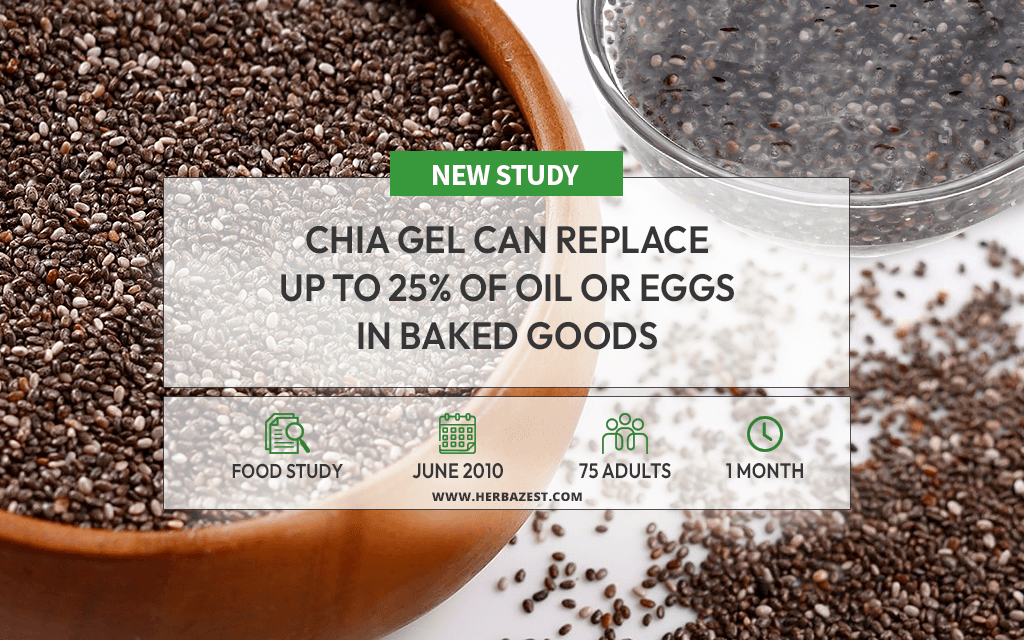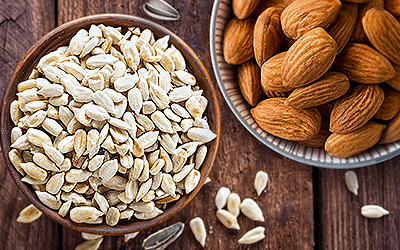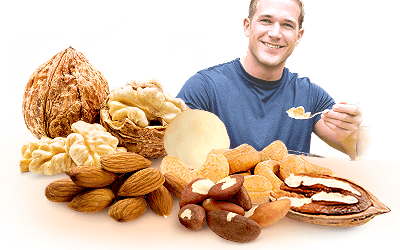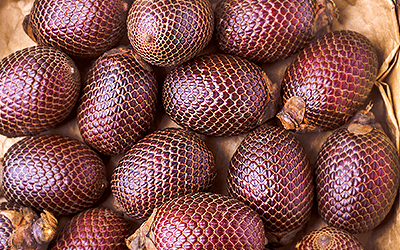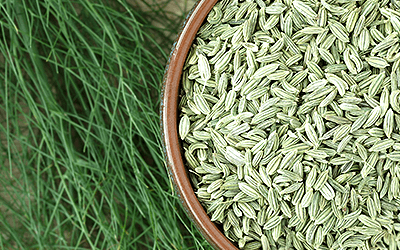In order to reduce the risk of cardiovascular disease and type 2 diabetes, it's recommended to follow a diet that's low in saturated and trans fats.1 However, reducing foods' fat content often compromises their flavor, texture, and other characteristics.
Despite their small size, chia seeds are a powerhouse of nutrients. They are an incredible source of healthy fats, fiber, protein, minerals, and antioxidants. Because of their unique properties, they may potentially be an effective fat replacer as well.
Argentinian researchers evaluated the effects of using chia seeds to replace eggs or oil in cakes, particularly on their nutritional content, sensory characteristics, and functional properties.
The Study
For the purpose of this study, researchers used a basic cake recipe that called for cake flour, sugar, milk, baking powder, sunflower oil, and eggs. Cake #1 served as the control.
Researchers baked six more cakes using the same basic recipe, just substituting either the eggs or the oil in the following ratios:
Egg Substitutions
- Cake #2: 75% eggs, 25% chia gel
- Cake #3: 50% eggs, 50% chia gel
- Cake #4: 25% eggs, 75% chia gel
Oil Substitutions
- Cake #5: 75% oil, 25% chia gel
- Cake #6: 50% oil, 50% chia gel
- Cake #7: 25% oil, 75% chia gel
Chia gel was prepared by soaking chia seeds in water for 30 minutes. Once baked, cakes were allowed to cool before being evaluated.
For sensory evaluations, researchers recruited 75 college students. Each one of them was given four cake samples (the control cake and three cakes from the egg or oil substitution group) and had to evaluate them using a 7-point hedonic scale (with 1 being the lowest score and 7 being the highest one).
The Results
In terms of nutritional content, the highest calorie reduction was obtained by substituting the oil with chia gel. In comparison to the control cake, cake #6 had a 62% reduction in energy from fat.
Both types of substitutions improved the fat profile of the cakes. As each substitution increased, the amounts of saturated fat decreased, and the ratio of omega-6 to omega-3 fatty acids improved. Substituting eggs with chia gel also decreased cholesterol levels.
For sensory evaluations, participants scored the cakes in terms of their color, taste, texture, and overall acceptability. At the 25% oil and eggs substitutions, there were no significant differences with the control cake. The average scores for 50% and 75% substitutions were neutral or slightly positive, indicating that participants did not dislike the final result.
For the functional analysis of the cakes, researchers measured characteristics like weight, volume, and symmetry. While substitutions did not affect weight and symmetry, the volume did change, with cakes becoming denser and less aerated as substitutions increased.
What Does this Mean?
As shown by the results of the study, chia gel can replace up to 25% of oil or eggs in baked goods, without changing their flavor, color, volume, and other characteristics. Higher substitutions are also possible, but they do affect the overall acceptability.
The authors of the study indicated that for a food to be considered an effective fat replacer, it should help maintain or even improve the sensory and functional properties of baked goods.
Other herbs that can be added to baked goods to increase their nutritional content are quinoa, lupin, flax, and amaranth.
Sources
- Journal of the American Dietetic Association, Chia (Salvia hispanica L) Gel Can Be Used as Egg or Oil Replacer in Cake Formulations, 2010
Footnotes:
- Cochrane Database Systematic Review. (2020). Reduction in saturated fat intake for cardiovascular disease. Retrieved October 17, 2023, from https://www.ncbi.nlm.nih.gov/pmc/articles/PMC7388853/
